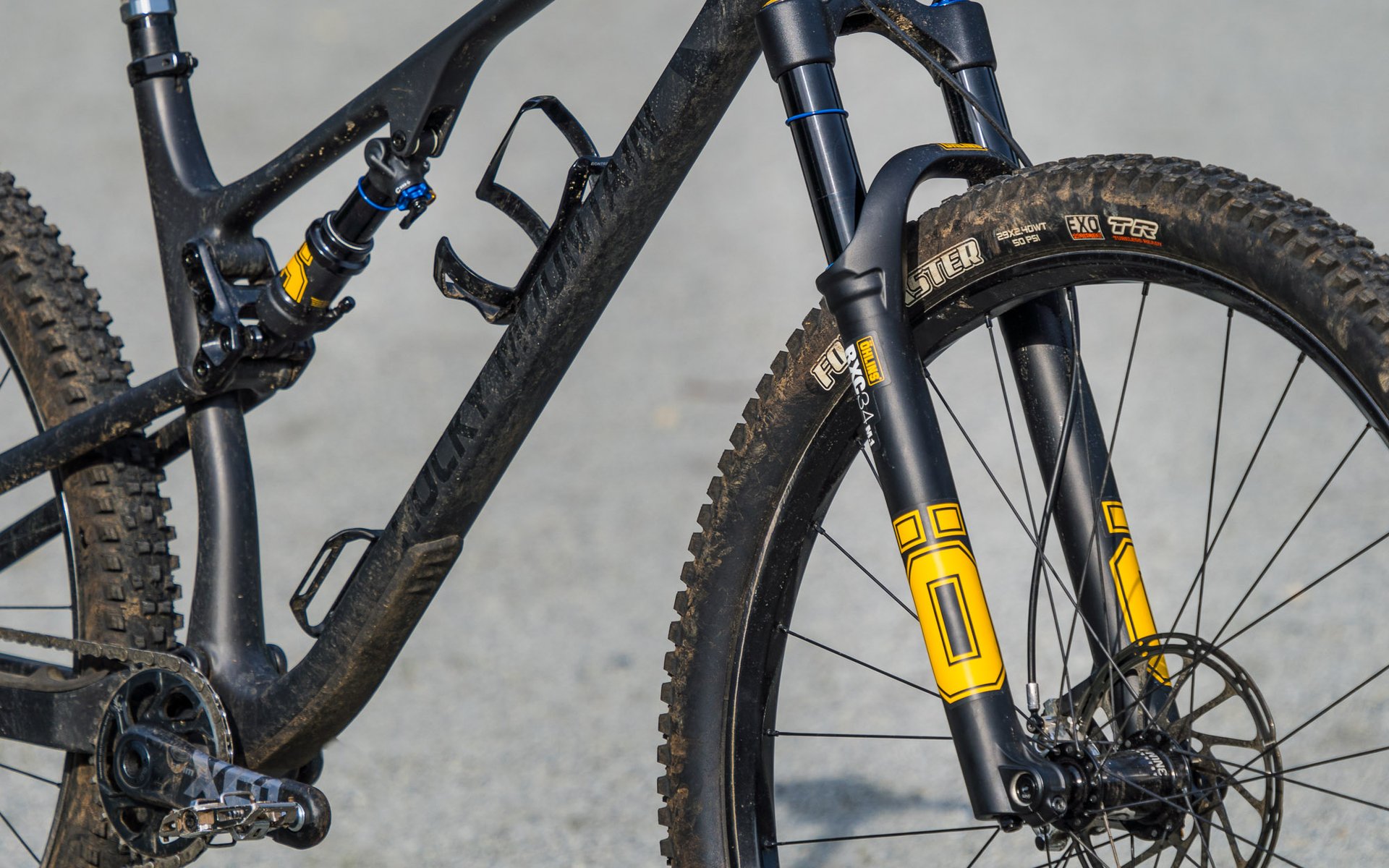
REVIEW
Öhlins TXC2Air and RXC34 m.1 Suspension
Fans of '90s World Rally Championship racing will know this tale. After Tommi Makinen took the overall WRC title in 1996 and 1997, the absolutely legendary title fight in 1998 came down to the finale in Great Britain, where despite Tommi's best efforts he managed to take the title from Carlos Sainz.* Tommi had entered the weekend with a two point lead but contact with a concrete barrier removed a wheel from his Lancer and he was forced to retire along side his title hopes... or so everyone thought. Fate had other plans, and Sainz would retire less than half a kilometer from the end of the final stage with a mechanical losing his provisional fourth place points and handing the title back to Makinen. Tommi would win the WRC overall in 1999 as well. Under his bright red Mitsubishi for all those titles? Swedish made Öhlins suspension. Twelve-year-old me was a big fan.
*If you're just tuning in via Drive to Survive and/or new to motorsports, yes, El Matador is current F1 and Best Driver Without a Contract Carlos Sainz Jr's father. He's also earned more world titles than his son with two WRC overall wins, and a whopping four Dakar wins.
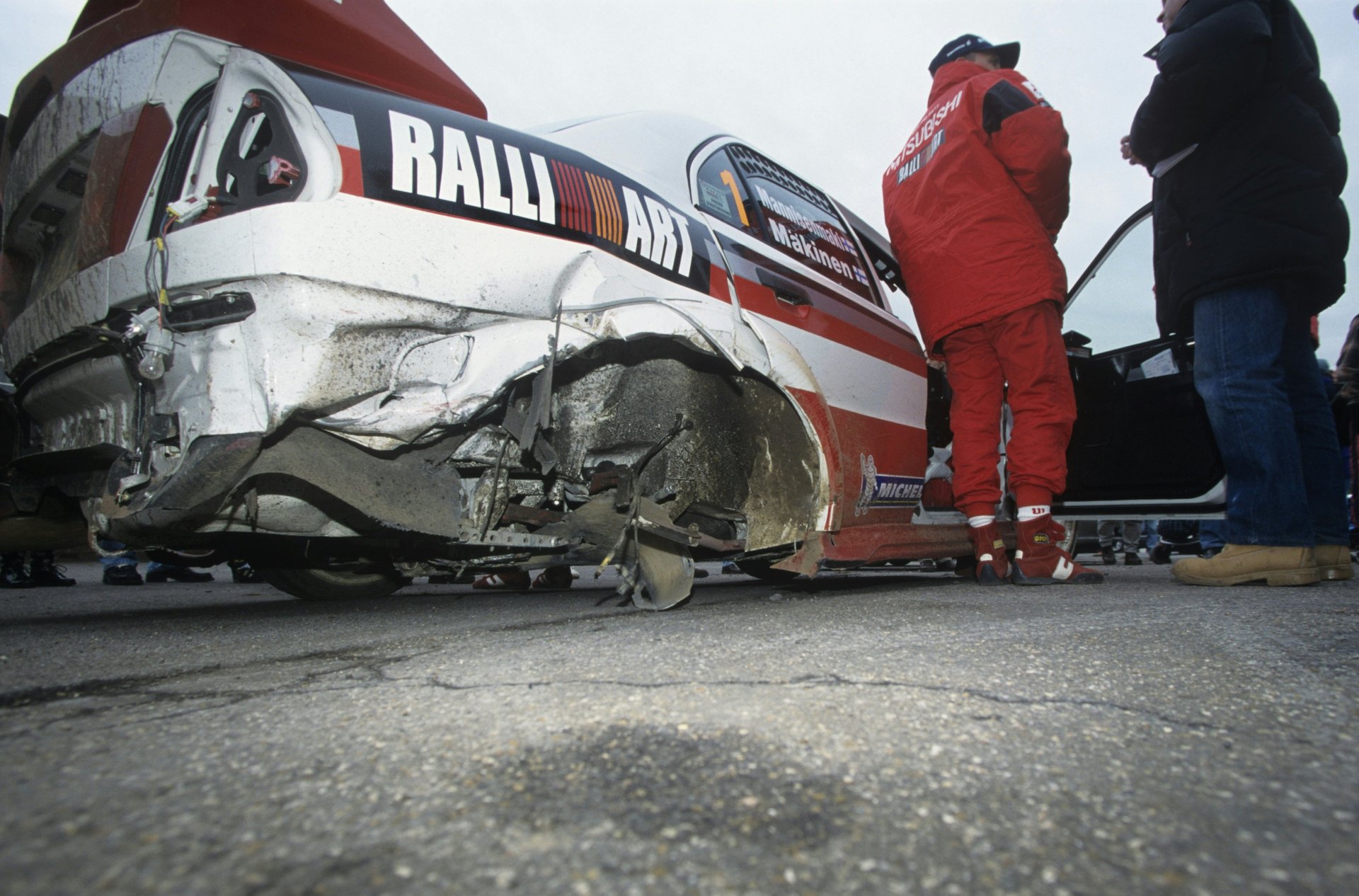
At one point there was a gold spring-equipped Öhlins damper in that wheel well. Tommi's rally ended on a transit stage when he was stopped by the police; rally cars move between stages on open, public roads and are required to be street legal. The Bobbys didn't think three wheels was enough, and so Tommi's title hopes were (temporarily) halted.
Öhlins has won hundreds (literally) of World Titles in motorsport. They aren't however, entirely new to mountain bike dampers. After some small forays through the company's almost 50 year history, the real push began in 2013, starting with downhill and working their way over the course of the intervening decade down the spectrum through enduro and trail to the launch of their first full XC line in 2023. As you'd expect from the storied brand, not only are all their mountain bike products based around their TTX (twin tube) technology, there's a heavy focus on the pointy end of things; they're a racing brand and not prone to mass producing low end products. There aren't price point models here like you'd see from some other brands. You can pick and choose a couple boxes on the spec sheet but it's in the name of marginal gains. After all, this is a brand that graces Ferraris and has won a staggering 19 of the past 20 MotoGP championships.
Overview
The TXC2Air rear shock and RXC34 m.1 fork landed on my doorstep this winter and I've been riding them in one of the harshest places for mountain bike components... you got it. "Downcountry", aboard my Rocky Mountain Element.
I'd suggest for discussion purposes that especially around where I live in North Vancouver, this frustratingly named and poorly defined segment of mountain biking puts suspension (and other components) under extreme duress. Lightweight XC-based components strapped to longer/lower/slacker bikes with aggressive geometry and grippier tires getting pushed down trails that don't look like your average XC trail in Arkansas (no offence to anyone there, certainly). It's often a recipe for overheated oil and sloppy bushings, at best.
The front and rear dampers share many features: three ride modes (open, pedal, locked), externally adjustable rebound and low-speed compression, and the option for either a remote lever to control ride modes or a damper mounted lever. While both have a lighter weight option - a carbon crown steerer equipped fork, and lighter weight TXC1Air, I've got a 120mm fork with an aluminum crown and the higher-volume TXC2Air shock.
TXCAir Highlights
- 2 air can choices - TXC1Air (245g) & TXC2Air (255g)
- 3 damper modes - open, pedal, locked
- Externally adjustable rebound (12 clicks) & low-speed compression (16 clicks)
- External remote option
- 565 USD
RXC34 m.1 Highlights
- 34mm stanchions aluminum (1,598g) or carbon (1,496g) CSU available
- 29" only, 44mm offset
- 100mm, 110mm, 120mm
- 3 damper modes - open, pedal, locked
- Externally adjustable rebound (12 clicks) & low-speed compression (12 clicks)
- External remote option
- Floating axle
- 2 chamber air spring with adjustable volumes
- 1,190 USD (aluminum), 1,390 USD (carbon)
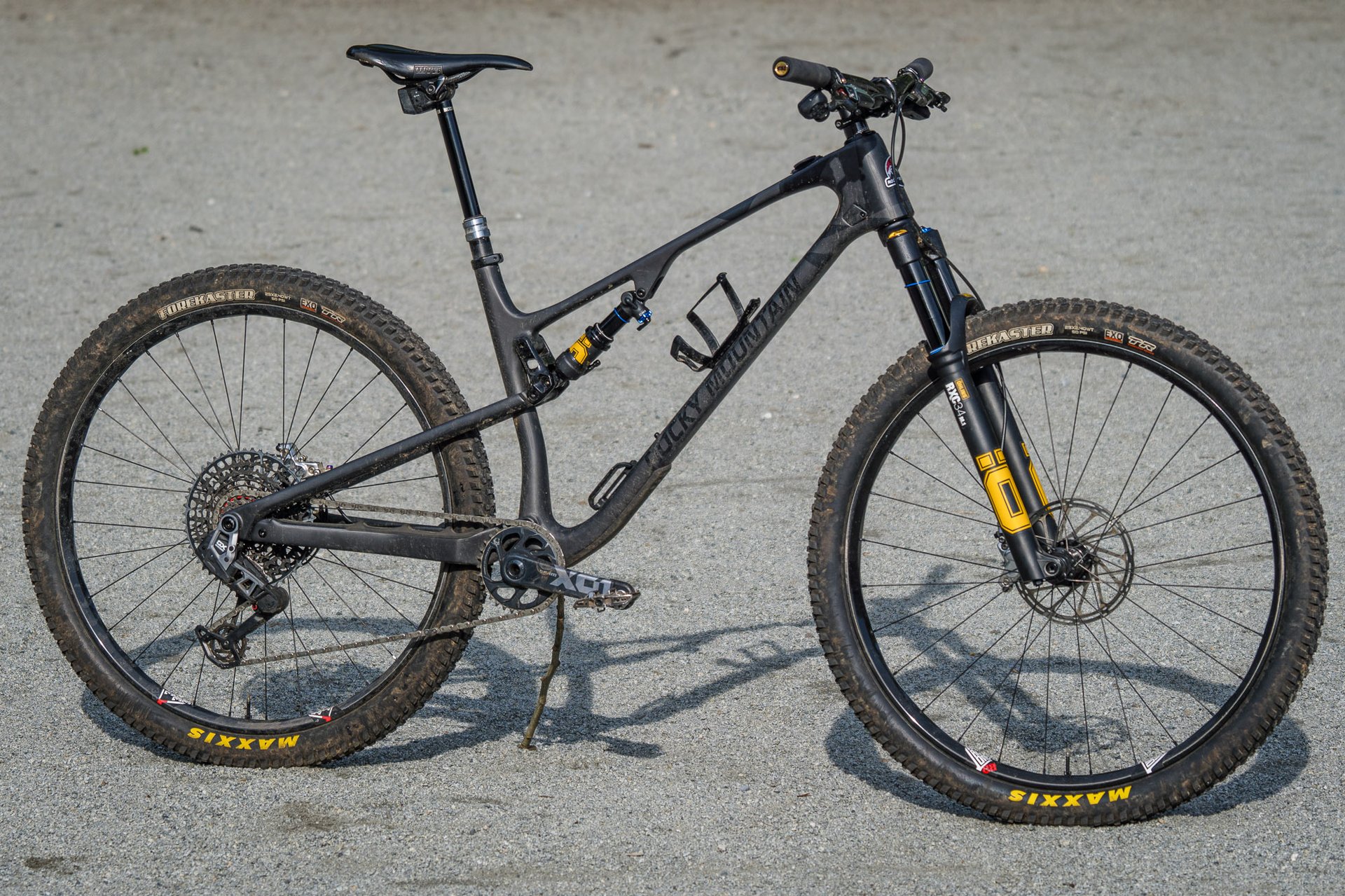
Testing duties fell to my Forekaster-shod Rocky Mountain Element, similar to the one Mike reviewed here. Currently I'd put this bike near the top of the heap in its class. I'd also say it's a real looker.
Setup
Installation and air pressure setup was as straightforward as it should be. Things got a little trickier when looking for some baseline knob fiddling settings, as my particular combination of fork/shock and frame weren't in Öhlins' database. Fortunately, there's not a myriad of external adjustments, so with rebound set to something that felt about right in the garage, I headed out. Shock adjustments require an Allen key, however fork rebound is adjustable with no tools.
I found happy damper settings within about three rides; knob clicks are enough to make a real, tangible difference in ride feel and cover a very broad range. I tweaked air volume in the fork a little later; more on that below. Most riders should be able to find settings that work without the need to change internals. If for some reason you can't find a happy place through external adjustments and shim changes at a service center, or if you just want to get really Princess and the Pea with things, the RXC34 m.1 shares lowers with the RXF34 m.2 and would accept the heavier trail-focused damper.
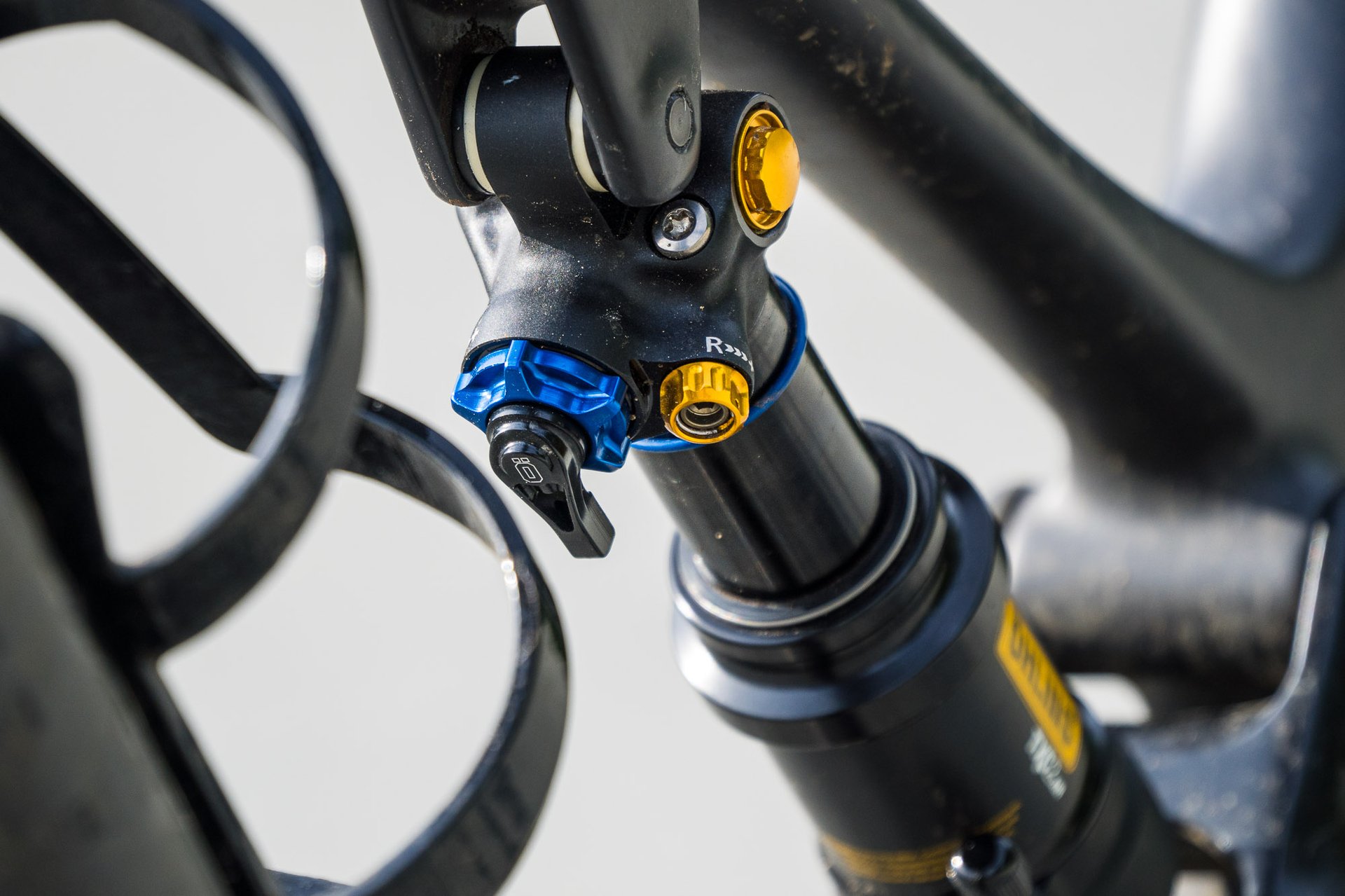
A 3mm Allen key is required to adjust shock rebound.
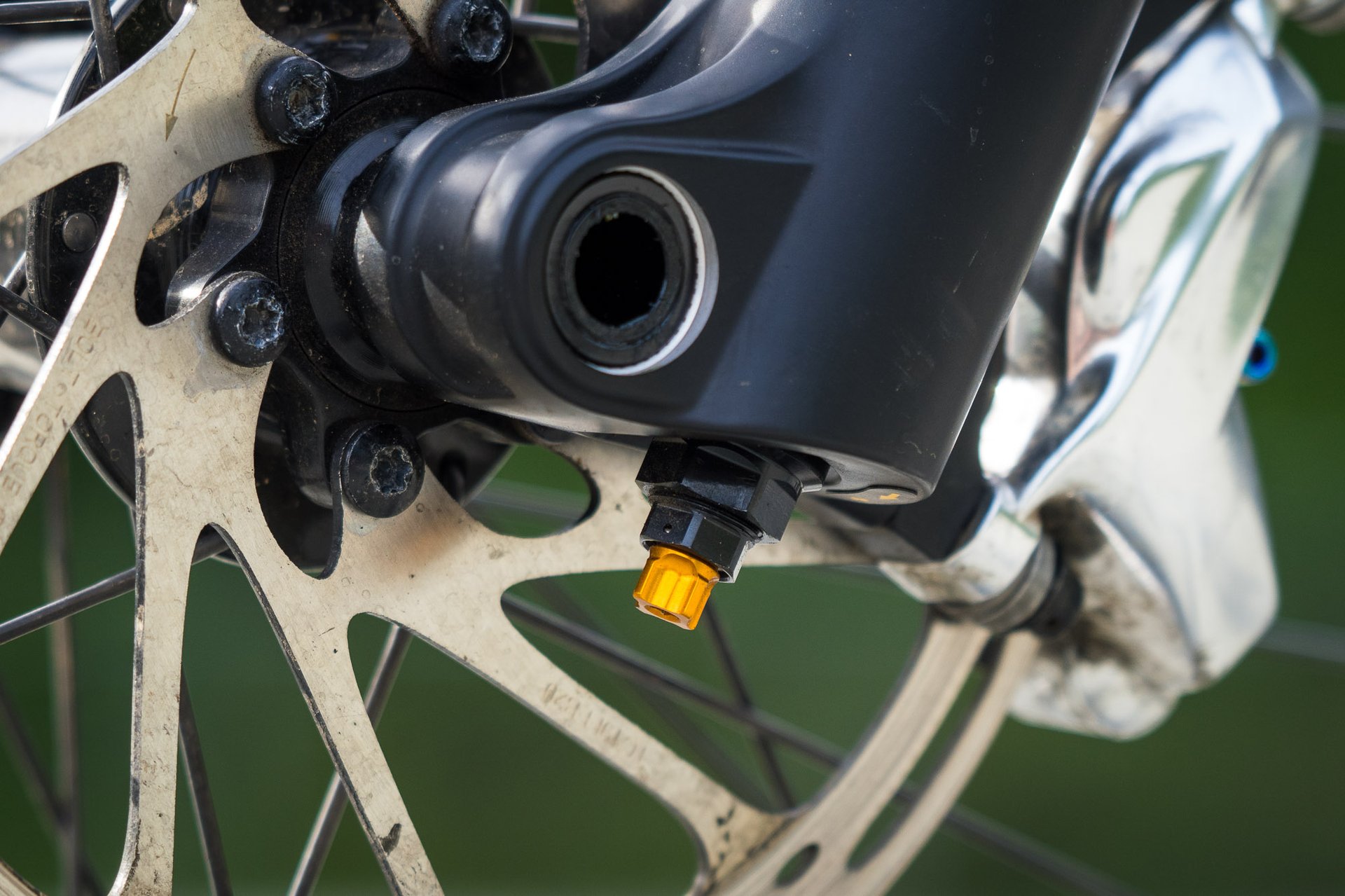
The rebound knob at the bottom of the left fork leg is dainty, and something I'm worried I'm going to damage (probably not on trail... I'm worried when I'm moving the bike around without a wheel), but so far these fears are unfounded. If you want to run 160mm rotors, you can.
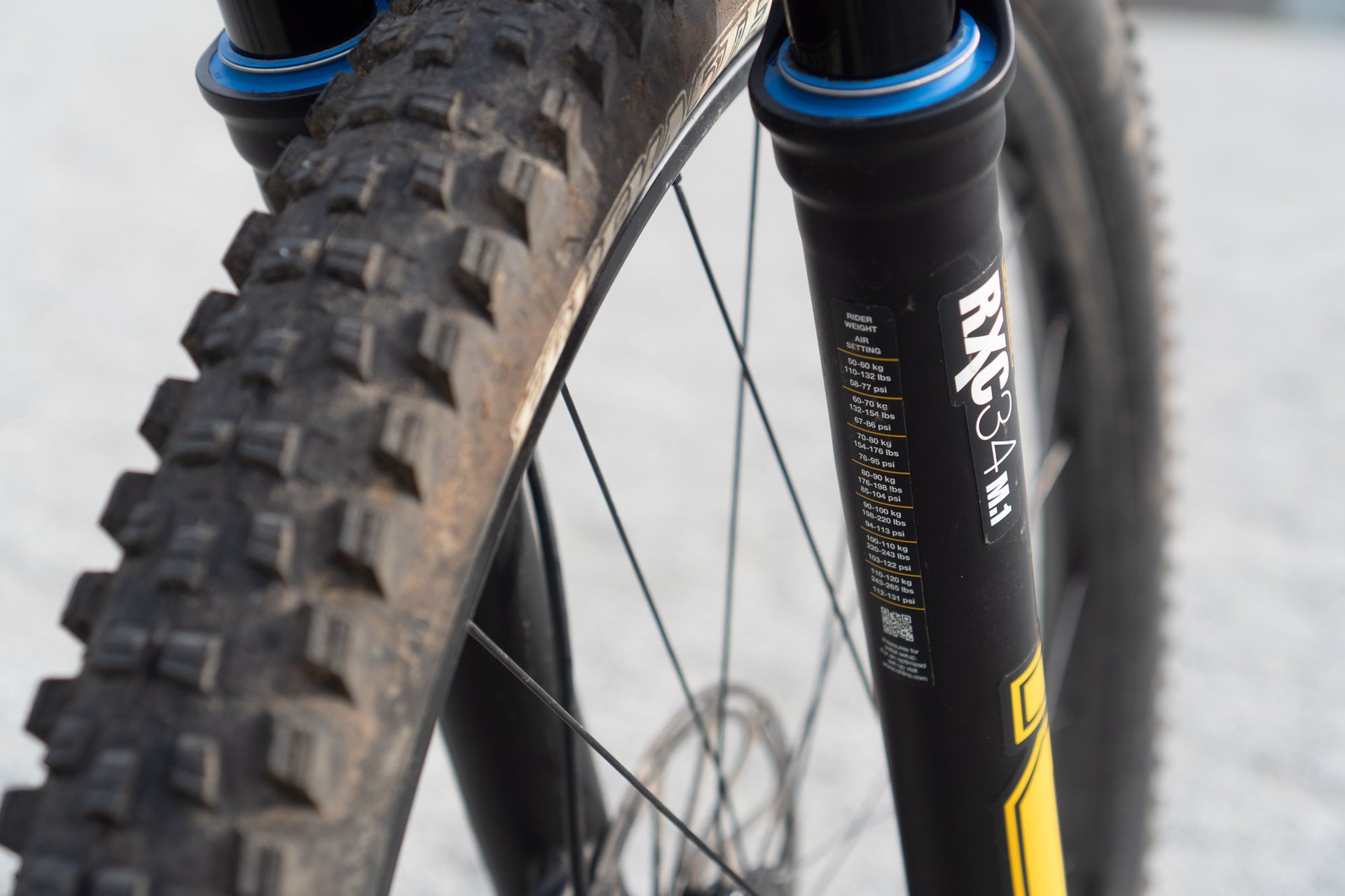
This fork sticker is all the help I'd get with setup.
Riding
While far from an exhaustive long term review to truly test longevity and service intervals, I've been on the umlaut-equipped yellow suspension for long enough to feel comfortable talking about it (I also hope to never have to type another umlaut...).
The loss of 1mm in stanchion diameter makes the fork look diminutive, it helps bring the RXC34 m.1 a whopping ~300g lighter in on the scale compared to the 130mm RockShox Pike I pulled off, and this is immediately noticeable on trail, with a light, lively front end. In open mode, the fork offers an impressive amount of mid-stroke support while being very light off the top for small bumps and traction. Early on, I occasionally found myself punching through to the stopper on big hits, especially on steep rolls with sharp transitions at the bottom. These bottom outs haven't been harsh and the fork stays composed, but I was blowing through all 120mm more easily than I would have liked at my desired sag. To rectify this, I reduced the air chamber volume, which minimized this bottom out behavior and retained the suppleness off the top.
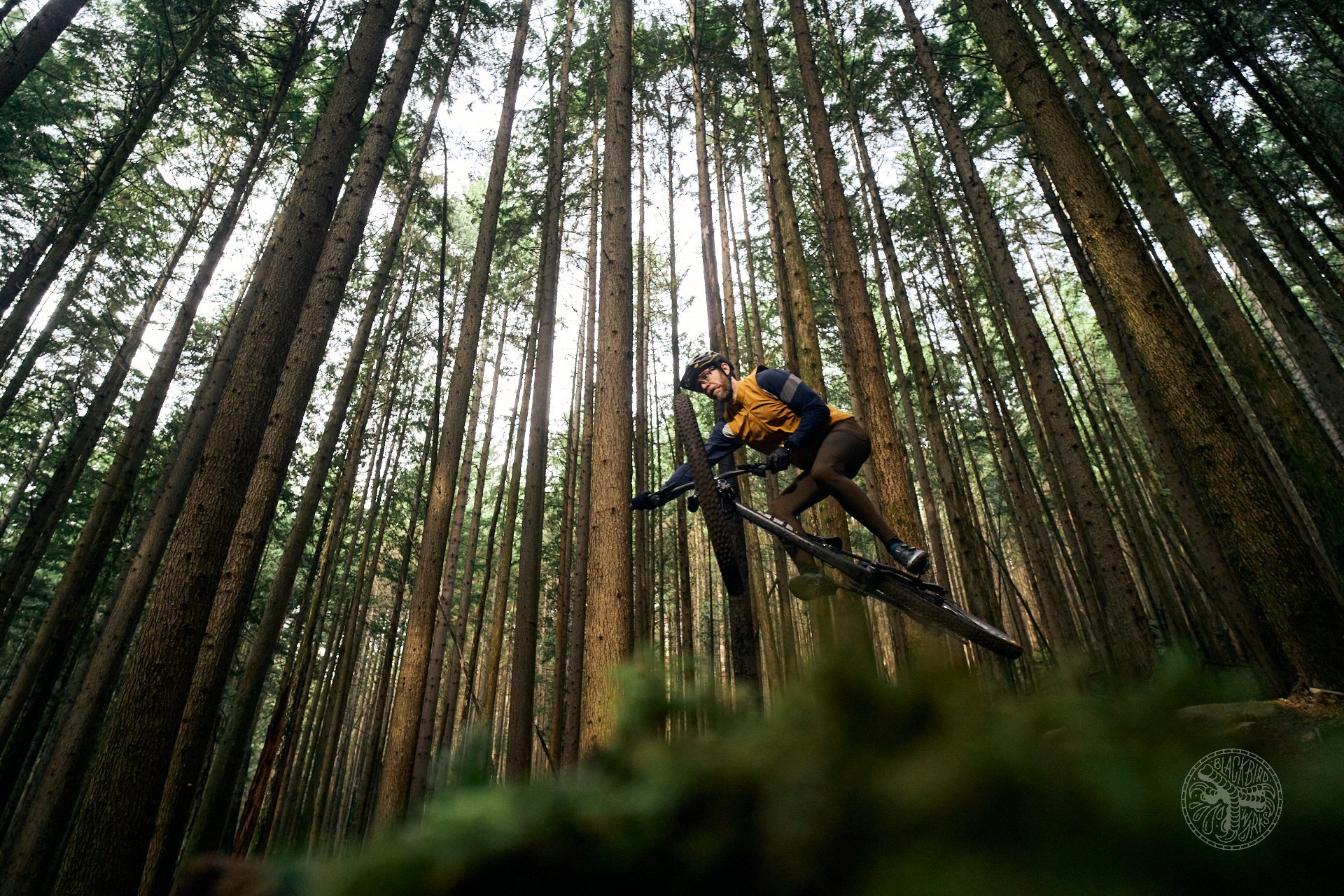
Ample mid-stroke support and light weight make pulling this bike off the ground an absolute treat compared to bigger bikes.
Out back, the TXC2Air has been an easy transition off a SIDLuxe Ultimate, and the middle 'pedal' mode is a welcome addition over the two position SIDLuxe (the current SIDLuxe is a three-position shock, my Element was equipped with an older version). Similar to the fork, the adorable little shock offers good small bump compliance and impressive mid-stroke support, critical for a pedaling-focused product.
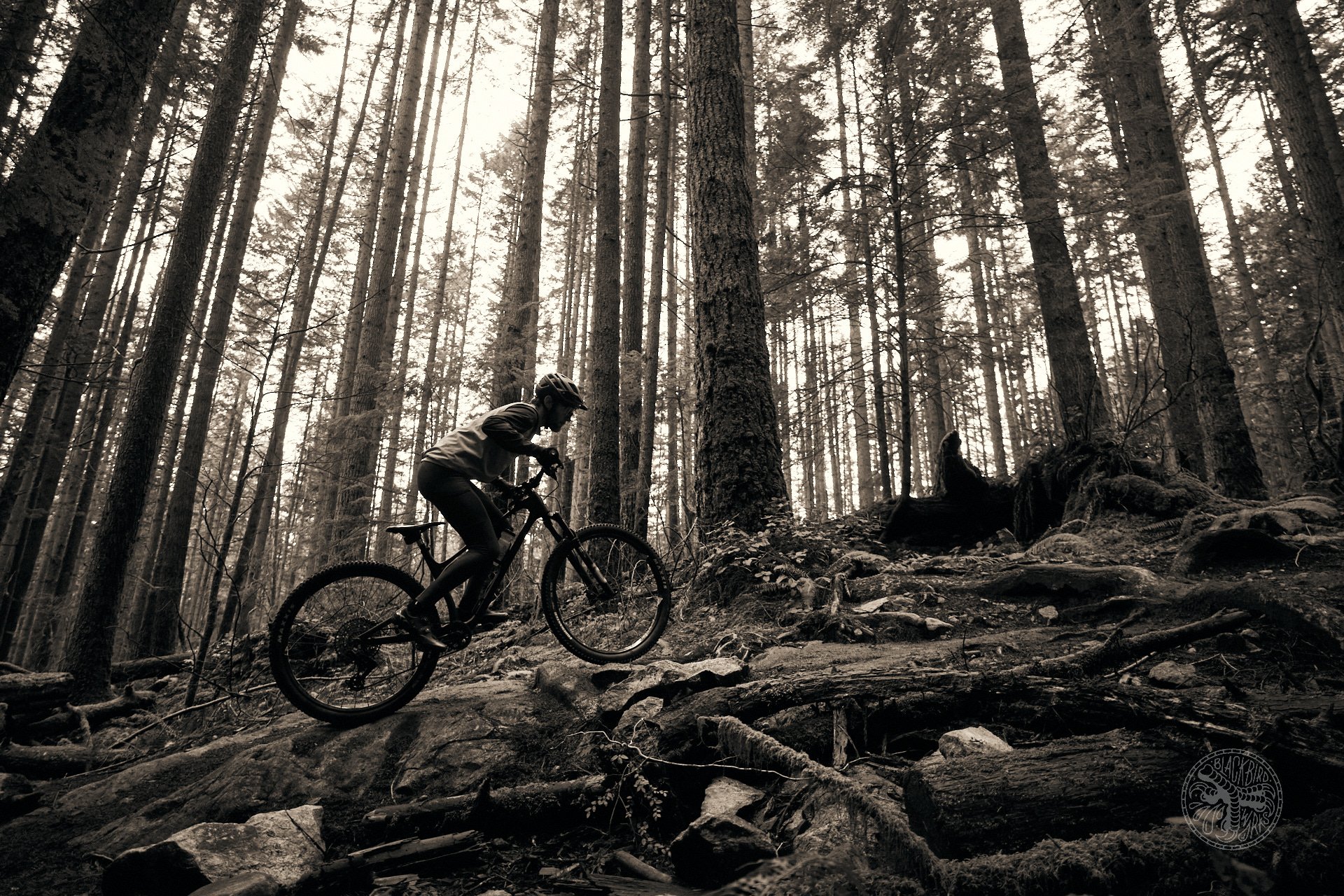
In 'open' or 'pedal' there's plenty of traction, good mid-stroke support, and healthy doses of low-speed damping to ensure your pedaling motions don't get wasted. Photo: Deniz Merdano
Damper Modes
Both shock and fork are equipped with a lever offering access to three damper modes: open, pedal, and lock. While the support and pedaling platform are impressive in open, flipping the levers to the middle pedal setting provides a significant upgrade for most climbs. You lose a bit of sensitivity off the top, but still maintain good traction and the bike responds noticeably better to pushing through undulating terrain and significantly reduces pedal-induced bobbing. Lockout mode should be reserved for smooth climbs, racing, or occasional bouts of masochism if that's your thing (that said, it's not the harshest lockout I've ever used, there's a touch of squish left to take the edge off).
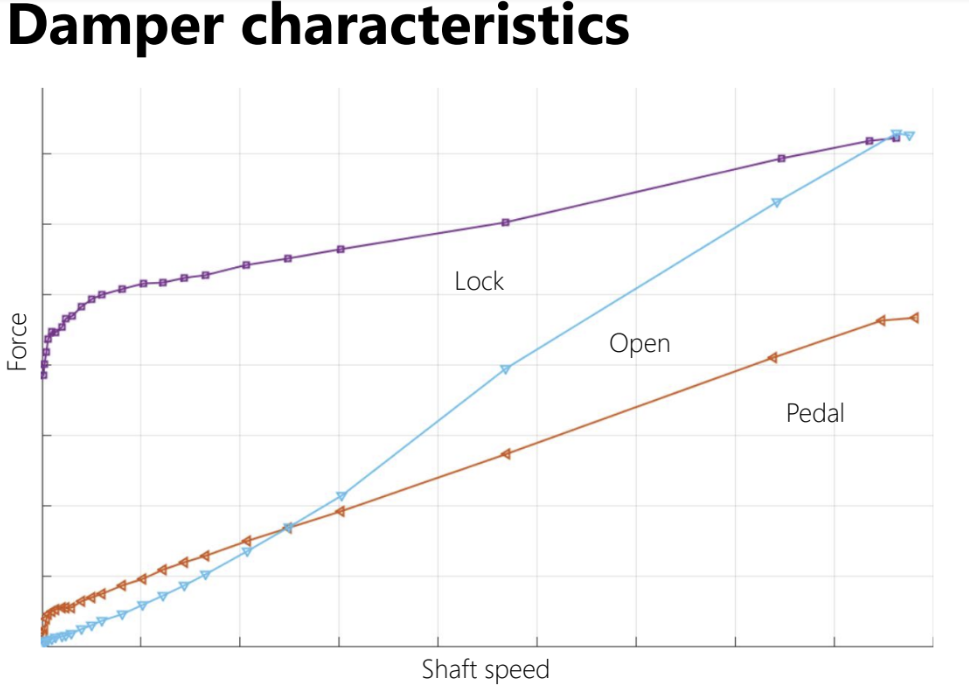
This graph provided by Öhlins needs the X and Y flipped, but it shows how the modes differ in the way all brands show kinematcs... without units.
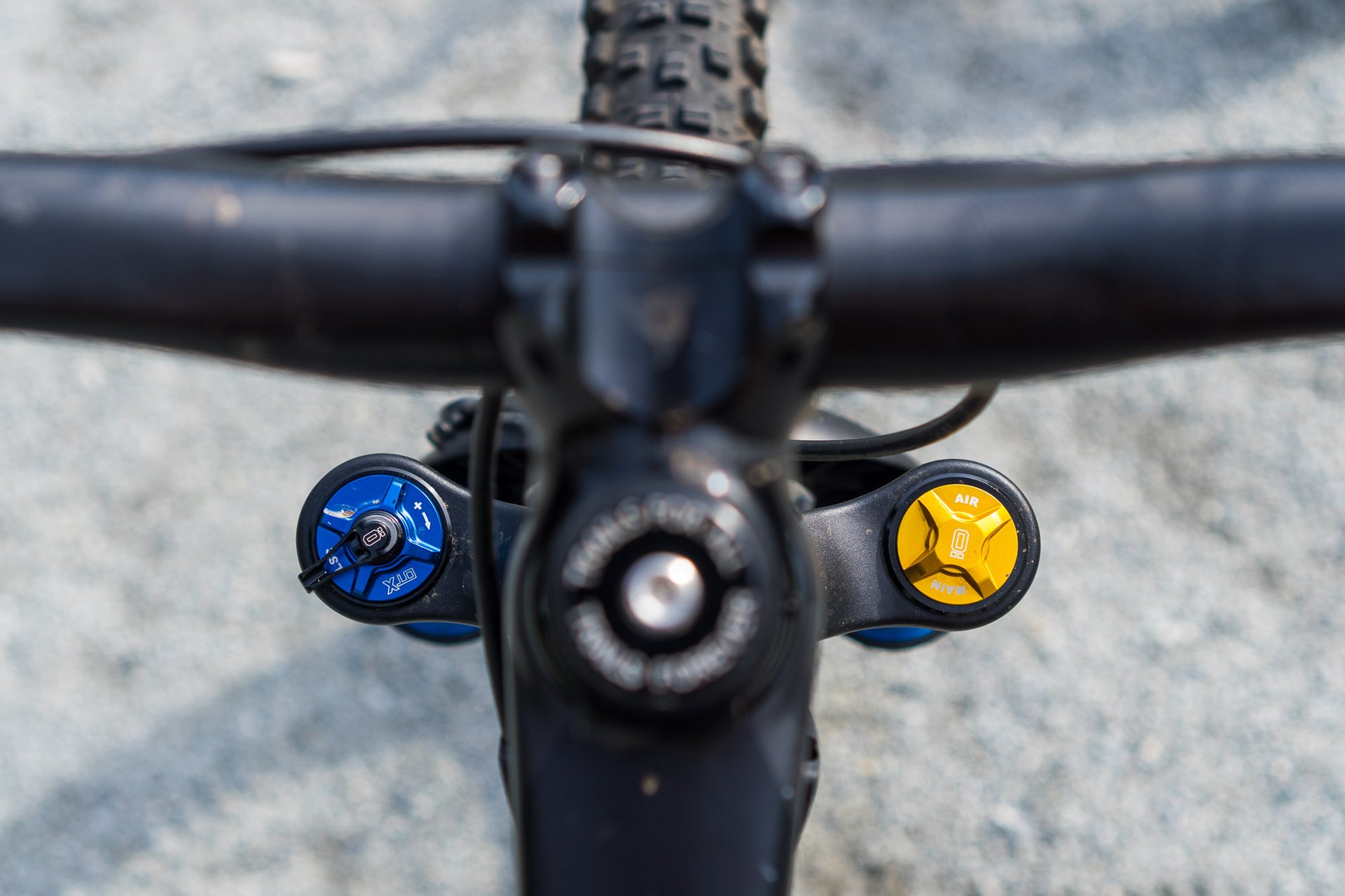
That little black lever on the left is your mode change, if you opt out of the handlebar remote. I found it needed much stronger detents; while pedaling it was very hard to feel any clicks or get it to 'stick' in pedal mode, seen here.
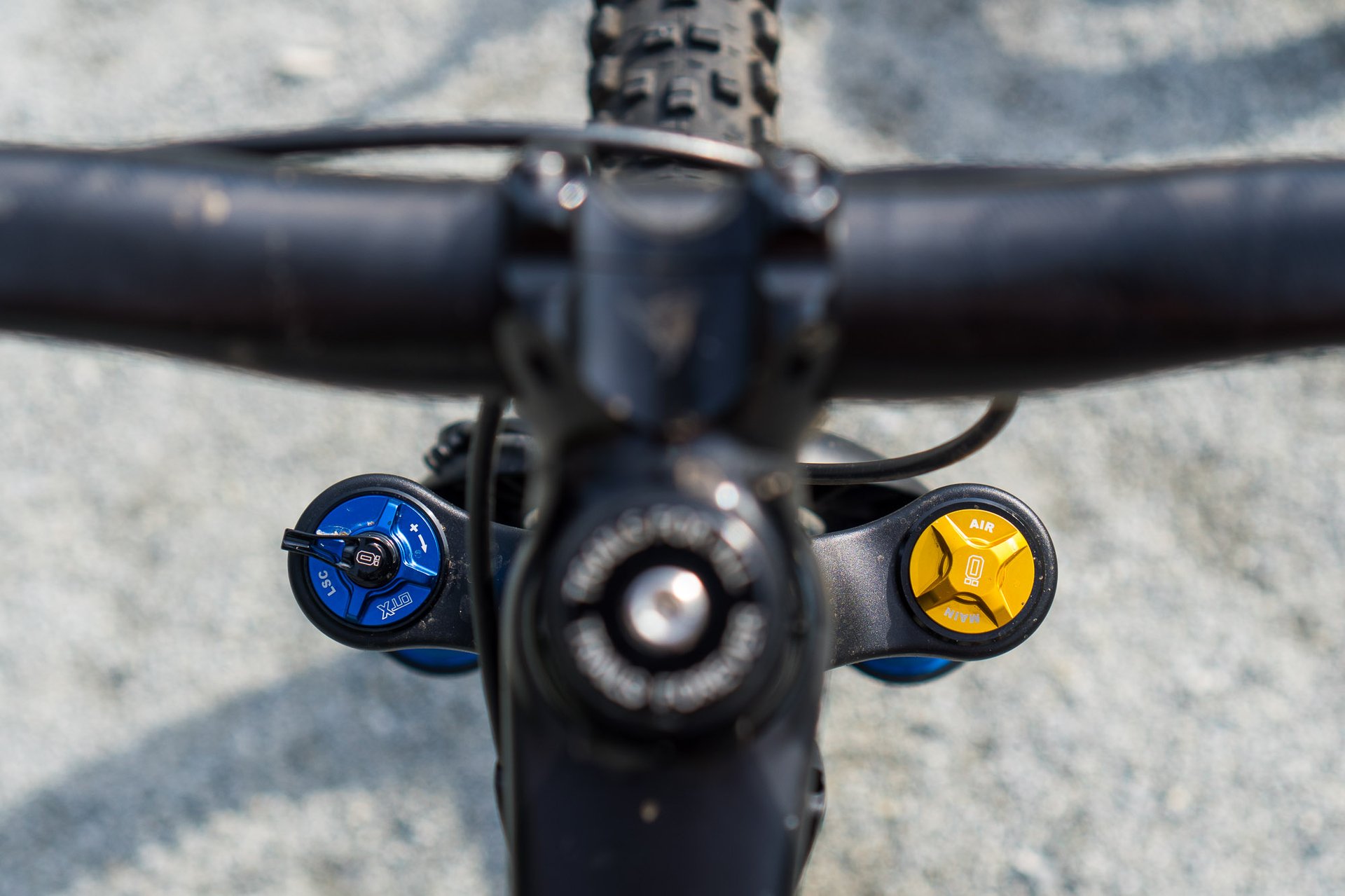
Locked out. There's 45 degrees of rotation between each mode.
Comparison
Comparing directly with the longer-travel, much heavier Pike isn't entirely fair to the RXC34 m.1. There's a huge weight disparity, and Öhlins offers the RXF34 as a decidedly more 'trail' focused option but it's interesting to see how far up the XC fork can punch. Comparing to the RockShox SID lineup or Fox's 34 Stepcast is more apples-to-apples. I don't have any experience on the latter but I have a fair amount of time on the SID, albeit the previous two position Charger Race Day damper which has been superseded by the three-position Charger Race Day 2.
With the caveat that this isn't a blind test, I'd say the Öhlins is noticeably less rigid than the Pike, but does an admirable job avoiding the fade and overheating that can be a real challenge for lightweight components like the SID on long hard descents. I'd say the same is true for the shock, where I find the SIDLuxe can overheat and lose damping and this is less likely to occur with the TXC2Air. Anecdotally, the TXC2Air is cooler to the touch after big descents as well. Thus far, both the fork and shock have also avoided any major bushing or wear issues, which were a challenge with the previous SID.
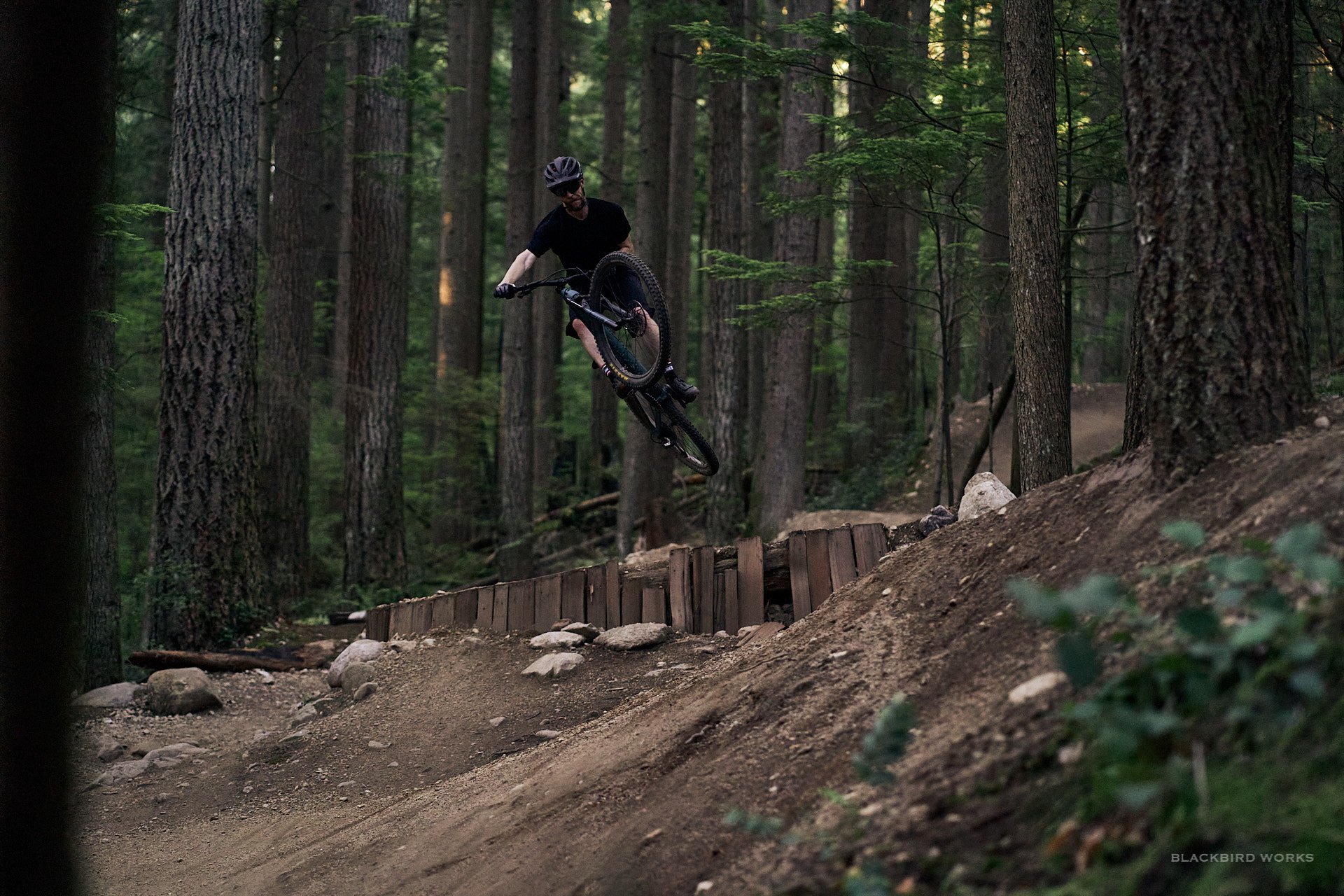
I've got plenty of SID experience as well - which is probably a more fair comparison for the RXC34 m.1 - I logged a lot of miles aboard the Transition Spur I reviewed a couple years back. Photo: Deniz Merdano
Conclusion
In many ways short travel and tiny shocks like this are the ultimate test - there's no hiding suspension crimes and tradeoffs when there's so little room to trade off between comfort and control, but Öhlins has struck a great balance with both fork and shock and even on decidedly non-XC terrain I haven't been able to get the suspension to lose its composure.
The increasing technicality of World Cup XC courses is a boon for consumers - manufacturers are forced to make components that are both lightweight and can (hopefully) withstand real abuse. While the old cheap-light-strong adage applies, Öhlins has entered the XC/Downcountry/Fast Trail market at very competitive prices relative to top-line product from its major competitors. On the price point note, if I were out shopping for yellow umlauts to put on my bike, I'd verify pricing and location on the nearest service center.
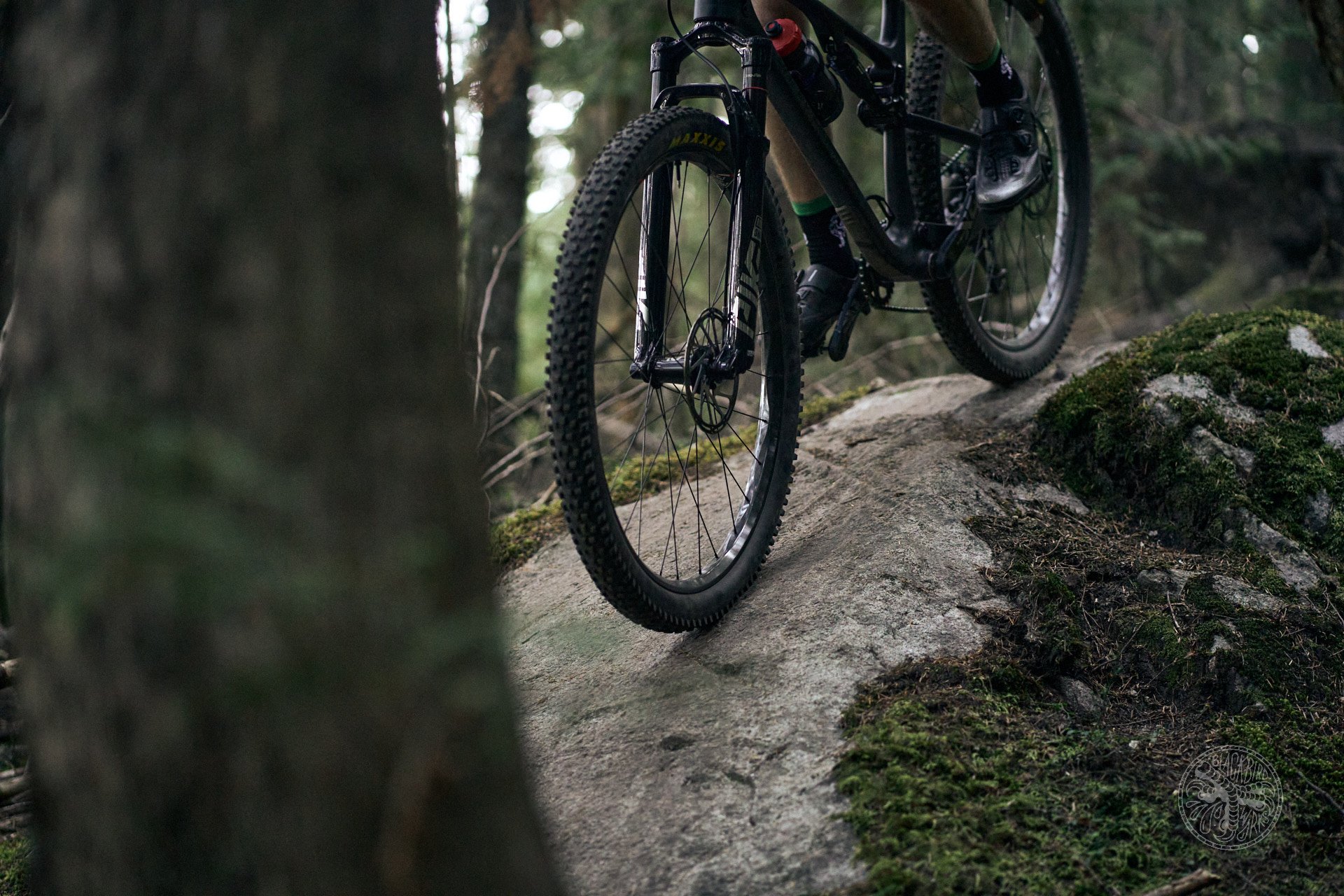
I have a bit more confidence on big g-outs and can get into a bit steeper/gnarlier terrain with a bigger fork up front - whether that's something you need on your bike is up to you. Photo: Deniz Merdano
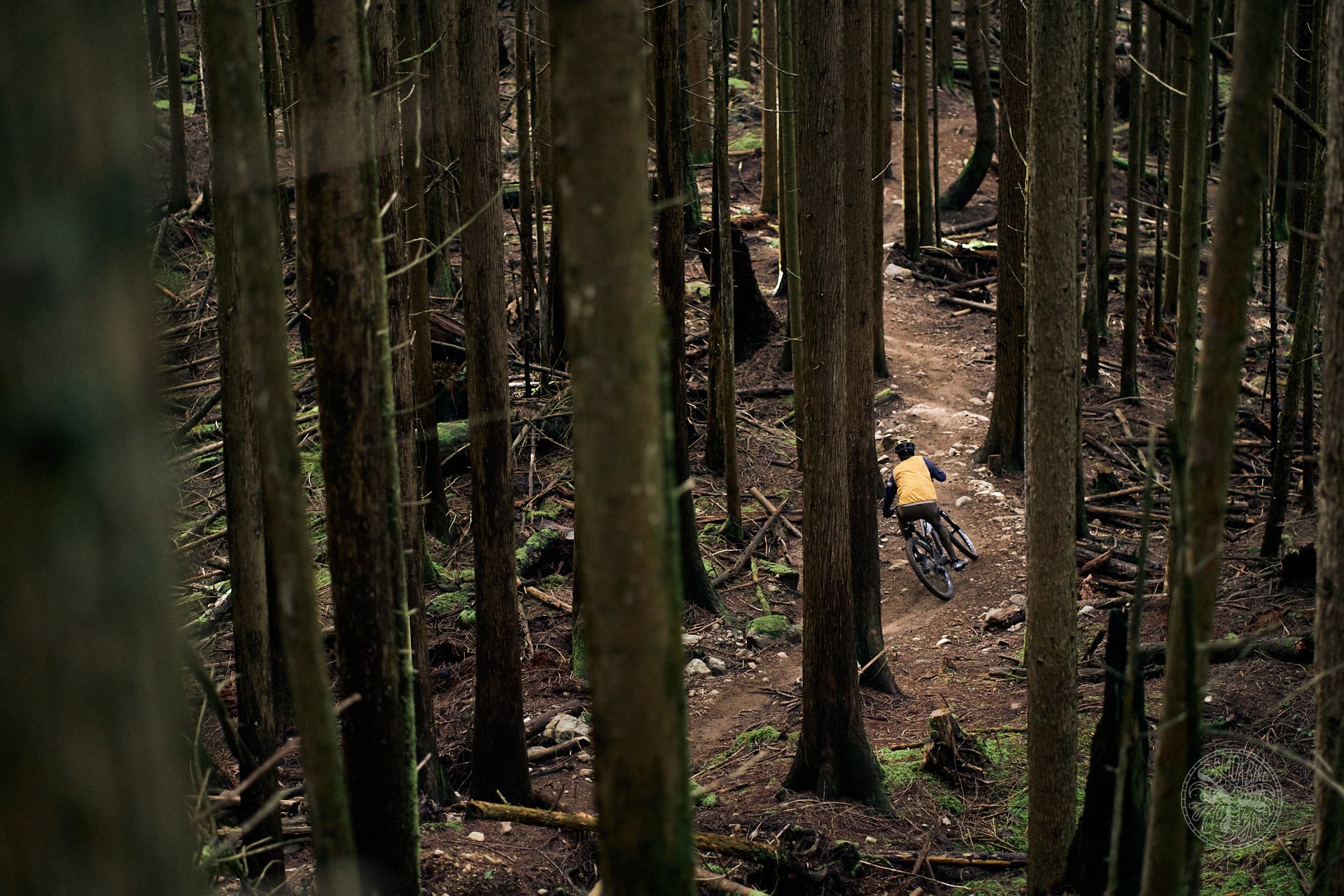
Sometimes you should match your vest to your suspension. Photo: Deniz Merdano
Has losing 10mm of travel, 1mm of stanchion diameter, and 300 grams off the front of my Element made it less capable and/or rowdy? A bit, yes. But that's no indictment of the Swedish fork (or shock). Bikes exist on a spectrum and the ability to tune your ride to your needs is part of the joy. There's a lot of terrain out there that I'm really happy to tackle on this setup. Going up and across the hill I love it; the only real drawback is a slight loss in confidence from chassis flex.
Some early reviews a decade back suggested that Öhlins knew dampers, but maybe needed a bit of time to fully understand the unique factors that impact mountain bike suspension; I'd suggest they've learned along the way, and have entered XC with a product very worthy of umlauts.
The real question left is, can Öhlins add Olympic gold to the brand's trophy cabinet?

XC.

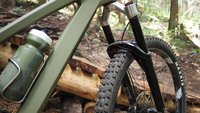


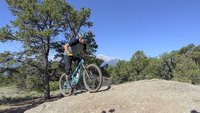
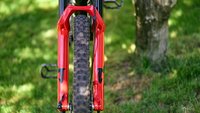

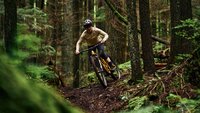
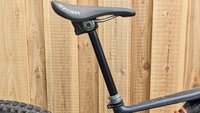


Comments
Perry Schebel
1 month ago
such a pretty build. love the classic aesthetic of the skinny-tubed element.
Reply
Cooper Quinn
1 month ago
Big fan of how it looks... and rides.
Reply
DanL
1 month ago
I'm not really too into XC bikes, but that's a stone cold looker.
Reply
bigbrett
1 month ago
How many sets of frame bearings have you eaten through on your element though?
Reply
Cooper Quinn
1 month ago
Not many, tbh? I also don't ride it heaps in gross weather - for whatever reason I generally end up on other bikes when its nasty out, which definitely helps bearing life.
Reply
taprider
1 month ago
Why are frame bearings a question with the 2022+ Element?
I have a very high mileage 2017 Element, and have not had problems or heard of others having problems.
Whereas, the 2011 had bushings the would eat the carbon swing link if you didn't frequently clean and/or replace the bushings.
Reply
bigbrett
4 weeks, 2 days ago
Because a lot of people seem to be going through them at a surprising rate, but it doesn’t happen to everyone. And I ask specifically because I really want one and trying to gauge the scope of the issue. I ran into a guy at the top of a trail a few weeks ago who said he loved everything about his except the fact he had to swap linkage bearings twice a season. He definitely pushed the bike hard and rode every day but wasn’t taking it through harsh weather (I live in Utah so dry/dusty). My guess is frame alignment or tolerances on just some of the frames. Idk. Glad to hear cooper hasnt had issues though! I’m deciding between an element and a stumpy so just trying to do homework.
Reply
AndrewR
4 weeks, 2 days ago
Define season? 150 hrs or 400 hrs? Ideally a set of bearings would last 200 hrs/ 2200 kms of averagely harsh mountain biking. It can depend on location on the frame too. But always worth finding out the maintenance requirements of a potential future bike before committing.
Reply
Nick Seavello
4 weeks ago
I’m just one data point, but I have 3,300 + miles on my A30 Element (with a ton of upgrades). I’m also 220 - 230 pounds as well, and ride in all seasons here in the wet PNW. Not super particular maintenance either. About 20 months into owning it, I’ve done on rebuild on the main pivot bearings and everything else is still ok. With that said, I will probably be looking at replacing them all at the end of summer. I would imagine I’m a bit on lucky side.
I’ve absolutely loved the Element. I really would love to upgrade to the carbon frame for easier cable maintenance and some other minor things.
Reply
Lynx .
4 weeks, 1 day ago
What I'd be curious to know is the size of the riders having issues vs those not, because what I think is more likely the case is frame flex under heavier riders and/or riders who ride harder. I mean, yes, there's always the chance of crap QC and there's some frames coming with the alignment off, but I think that's something that's a lot less common with carbon as it doesn't suffer the material movement that say alu does when welded and there's fixtures for everything in a specific place, so. If they were alu frames, then yeah I'd be un-bolting the top link and seeing how the shock lines up to the linkage and then leave the bottom assembled and see how the seatstays line up with the linkage.
Sorry for posating again, what should definitely be a meme for horrible QC, the company used their customers as their testers and QC dept, but Niner was most famous for sending out horrendously mis-aligned frames.
Reply
taprider
4 weeks, 1 day ago
What is the difference between the 2016-2011 and the 2022+ Elements?
is it that the bearings are pressed into the aluminum swing link for the 2016-2021
whereas, the bearings are pressed into the carbon stays for the 2022+?
Reply
Kenny
1 month ago
That damping graph is interesting, i wouldn't have expected the pedal mode to be way softer at faster shaft speeds.
Have you noticed much change in high speed support/bottom out resistance when descending in pedal vs open? (If you've tried it).
I have an RXF36 M2 on my tallboy, and a TTX1. Speaking for the shock I wonder if it's the same, I can't find a comparable graphic. I've only got a dozen rides or so in and was most running it in the middle position. If the open position actually has more high speed damping support I will have to play with that.
Reply
Cooper Quinn
1 month ago
Yeah the curves are interesting - I was a bit surprised by that as well. I haven't noticed this, but I also haven't done any 'real' descending in pedal mode. I'm gonna try it, and will report back.
Also, nice looking bike!
Reply
earle.b
1 month ago
They should rename the settings. Pedal is xc, Open is Downcountry, and Lock is hardtail.
Reply
Lynx .
4 weeks, 2 days ago
Nice review, wish I had the $$ to giver them a try. I think you nailed it when you said they know suspension, but needed to have some time to learn the intricateness of MTB suspension, but if how Loic and Fin have been doing the last couple years onboard the DH is any indication, I'd say they've got it figured out now.
Need to go back end edit the review though Cooper, you seem to have put the conclusion in before the end and have a not finished thought/paragraph right before that.
Reply
Cooper Quinn
4 weeks, 2 days ago
Thanks, updated! Not sure what happened to that sentence...
And yeah, I think its safe to say the DH side of things is pretty sorted, ha!
Reply
Please log in to leave a comment.